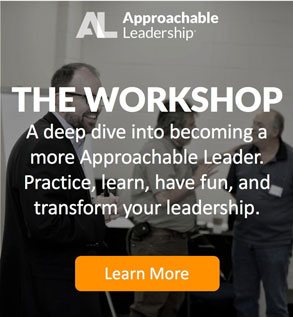Strategy Execution: What You’re Not Thinking About
Can your kid’s X-Box teach you strategy execution?
I got to spend some quality time with my kid and her X-Box this weekend while we survived the second straight week of major winter weather events that weren’t. Her favorite game is Forza, a car racing game that is amazingly accurate. Well, other than the part where you paint your Bugatti pink.
One of the things I like about Forza is that as you go flying through the race course it shows you the proper line for making a turn. My daughter is a pro. She negotiates the turns like her last name is Andretti and wins almost every race she’s in. But when I first start playing I often turn too fast or too slow. I try hard to avoid the walls but usually hit them head on. Then I remember the classic advice: “Focus on the road, not the wall.” Suddenly I start looking like I know how to drive a car in real life.
Is there a secret to successful strategy execution?
Like making a 200 mile per hour turn in Forza, strategy execution is hard. In addition to running a consulting business, I also serve on the Board of Directors for EO Oklahoma and volunteer as a middle school debate coach. As a leader, I have a vision for what I think should happen in each of these organizations. Like that arrow on the road, vision is easy. Turning that vision into reality? Hard.
One of my “must reads” each month is Harvard Business Review. They’ve featured numerous articles on strategy execution over the past two years. Check them out here, here, here, and most recently here. These articles debate the correct steps for successful strategy execution. How do you define a successful strategy? Who should be in charge of implementation and execution? Are implementation and execution two different concepts?
These debates have raged for more than 25 years. And why shouldn’t they? Especially when 75% of organizations fail to implement their strategy. Peter Bregman, who wrote HBR’s most recent article on the topic, argues that Execution is a People Problem, Not a Strategy Problem. I couldn’t agree more. Bregman’s article provides a simple blueprint for leaders to follow the next time they’re looking to implement a new strategy. I recommend everyone take the time to read it. But, if I may, I’d like to focus on this one point.
Execution is a People Problem.
Peter Drucker famously said: “Culture eats strategy for breakfast.” And this is the biggest challenge facing strategy execution. If your team isn’t on board, your strategy ain’t going anywhere. This is why I argue (and a lot of research backs me up) that Approachable Leadership is the best lever you can pull if you want to improve your organization’s ability to deal with change.
Make no mistake. A good strategy is vital to any successful business or organization. Whether you are reorganizing a department or launching a new product or building a top notch safety record, you will not succeed without a good relationship with your team. Successful strategy execution begins and ends with people. If you don’t get it right at the beginning, you’ll never make it to the end.
Think about this for a second.
What’s the main problem your first line leaders encounter when implementing a new strategy? Pushback from those they lead. Sometimes the pushback is obvious, like openly complaining about a change or flat out refusing to do it. But it’s usually much more subtle. Continuing to do what you’re comfortable with or letting other things take priority. Begrudgingly following through all the while looking for evidence that the new change won’t work. Sometimes this passive-aggressive behavior is on purpose. A lot of the time your team won’t even know they are doing it.
Whether you are dealing with an employee, a volunteer, or a teenager, a leader faces the same challenge. When you notice resistance to the vision do you make the “Villain” assumption or the “Hero” assumption? The “Villain” assumption means you believe your teammates are trying to railroad your vision. If you choose the “Hero” assumption you believe instead that your teammates want to be great. If you make the “Hero” assumption then resistance means there is an obstacle in the way or a resource is missing.
The assumption you make is up to you. But whichever assumption you make will change your own behavior. If you are making the “Villain” assumption you are watching the wall through your turn. And boom! You lead your team exactly where you don’t want to go.
If you make the “Hero” assumption you (and your team) are looking at the road. Sure, the wall is there, but if you work together on making sure everyone sees the line clearly the turn will take care of itself. If your teammate sees problems with the strategy you should listen. They are closest to the action. Maybe there is a better way. Perhaps you are steering toward the wall without even knowing it.
If I can distil any bit of knowledge from my 20+ years working to improve relationships inside troubled companies, it’s this:
Everyone Has Something to Teach You
Strategy execution is complicated. You can’t possibly know everything there is to know about all the variables. And like a fast-moving car, the conditions around you are constantly changing. But if you start with the assumption that everyone has something to teach you, your success rate will be far better than most. When you invite input from all levels of your organization, your strategy will be stronger. And when people feel that their concerns have been heard and acknowledged, their willingness to execute the new strategy is also stronger. You’re all looking at the road, not the wall.
Have you ever struggled with strategy execution? When have you found the answer to a challenge comes from others? How do you let your team know that you want to learn from them? What do you think you can learn from your teammates?










